Video of the Week:
Flower Bed Design
Trees:
Pruning Storm Damaged Trees
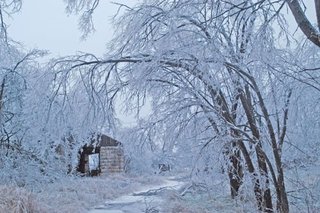
1. Be careful: Slippery ice and chainsaws don’t mix. Wait until all ice has melted before beginning work.
Check for downed power lines or hanging branches. Don't venture under the tree until it is safe. If large limbs are hanging precariously, a certified arborist has the tools, training and knowledge to do the work safely.
2. Cleanup: Remove debris so you don't trip over it.
3. Decide whether it is feasible to save a tree. If the bark has been split so the cambium is exposed or the main trunk split, the tree probably will not survive and should be removed. If there are so many broken limbs that the tree’s form is destroyed, replacement is the best option.
Topping, where all the main branches are cut and there are only stubs left, is not a recommended pruning procedure. Though new branches will normally arise from the stubs, they are not as firmly attached as the original branches and more likely to break in subsequent storms. Also, the tree must use a lot of energy to develop new branches, leaving less to fight off diseases and insect attacks. Often, the topped tree's life is shortened.
4. Prune broken branches to the next larger branch or to the trunk. If cutting back to the trunk, do not cut flush with the trunk but rather at the collar area between the branch and the trunk. Cutting flush with the trunk leaves a much larger wound than cutting at the collar and takes longer to heal. Middle-aged or younger vigorous trees can have up to one-third of the crown removed and still make a surprisingly swift comeback.
5. Take large limbs off in stages. If you try to take off a large limb in one cut, it will often break before the cut is finished and strip bark from the tree. Instead, first make a cut about 15 inches from the trunk. Start from the bottom and cut one-third of the way up through the limb. Make the second cut from the top down but start 2 inches further away from the trunk than the first. The branch will break away as you make the second cut. The third cut, made at the collar area, removes the stub that is left.
Note: Pruning can be dangerous. Consider hiring a trained, certified arborist to do major work. Also, a good arborist knows how to prune trees so that storm breakage is less likely to occur. Preventing damage is better than trying to fix it once it has happened. The Arbor Day Foundation maintains an excellent Web site that contains detailed information. The URL is: http://www.arborday.org/media/stormindex.cfm (Ward Upham)
Dutch Elm Disease Resistant American Elms
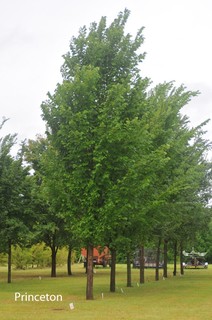
‘Valley Forge’
Survival: 100%
Crown Shape: Vase
Lacebug damage to foliage: Minimal
European elm flea weevil damage: Minimal
Storm Breakage: Fair
Comments: Strong grower, broad spreading
‘Princeton’
Survival: 100%
Crown Shape: Vase
Lacebug damage to foliage: Minimal
European elm flea weevil damage: Minimal
Storm Breakage: Fair
Comments: Impressive grower, upright habit, attractive tree
‘New Harmony’
Survival: 100%
Crown Shape: Vase and round
Lacebug damage to foliage: Significant
European elm flea weevil damage: Minimal
Storm Breakage: Not in Minnesota study
Comments: Narrow, upright habit with strong, central axis
‘Lewis and Clark’ (Prairie Expedition)
Survival: 80%
Crown Shape: Broad oval
Lacebug damage to foliage: Minimal
European elm flea weevil damage: Minimal
Storm Breakage: Good
Comments: Strong grower with broad spreading habit, some wetwood.
Storm damage can be minimized by pruning when the tree is young. Maintain a central leader but prune out all lower branches as the tree grows and branches increase in diameter so that there is room to work under the tree. Also prune out branches attached with a narrow angle as these are most likely to give way in ice or wind storms. For photos and more information from our John C. Pair Horticultural Center, see
http://webdoc.agsci.colostate.edu/bspm/Kansas%20Elm%20Trial%20Nov%2012%202014.pdf
(Ward Upham)
Start Trees Off Right
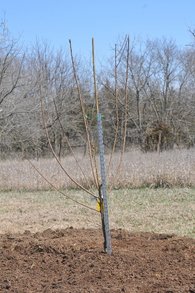
1. Bare soil maintained with herbicides.
2. Area under tree mulched 3 inches deep.
3. Tall fescue allowed to grow under tree.
4. Bermudagrass allowed to grow under tree.
5. Kentucky bluegrass allowed to grow under tree.
All treatments were applied to Eastern redbud seedlings as well as to pecan seedlings. All trees were fertilized according to recommendations and watered during the growing season with up to 1 inch of water if rainfall was deficient. At the end of two years, trees were measured and harvested. Data was taken on caliper (diameter) 6 inches above the ground, weight of aboveground portions of the tree, leaf area, and leaf weight. There were no differences in any measure between the mulched treatment and the bare soil treatment for either tree species. All measures showed significant growth increases if lawn grasses were controlled around the tree.
Results include the following:
1. Caliper: Caliper measures 6 inches above the soil surface were twice as large for plots without grass than for those with either fescue or bluegrass, but only 50% larger when compared to the bermudagrass plots.
2. Top growth weight: Redbuds showed a 300% weight advantage for plots with grasses controlled than those without. Pecans showed a significant 200% increase.
3. Leaf area and leaf weight: Leaf areas were 200% larger in plots without grass competition and leaf weight showed a 300% increase.
The obvious conclusion from this study is that grasses must be controlled under a newly transplanted tree to get the best possible growth. Though there were no differences in growth whether mulch was used or not, you may still wish to mulch for aesthetic reasons or to help control weed growth. How far from the trunk should the grasses be controlled? Try a minimum of 3 feet. (Ward Upham)
Landscaping:
Now is a Good Time to Design Your Landscape
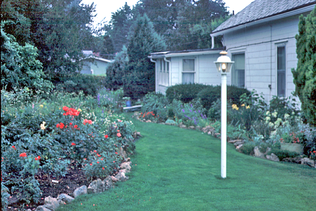
You can download printed publications for landscaping free of charge from http://hnr.k-state.edu/extension/publications/landscaping.html. Information on plants recommended for Kansas can be found at http://hnr.k-state.edu/extension/info-center/recommended-plants/index.html
You may also request printed copies from your local K-State Research and Extension office. There may be a small charge for printed copies of larger publications.
If you need to know how to contact your local extension office, go to http://www.ksre.ksu.edu/Map.aspx and mouse over your county. (Ward Upham)
Fruit:
Fruit Trees and Frost
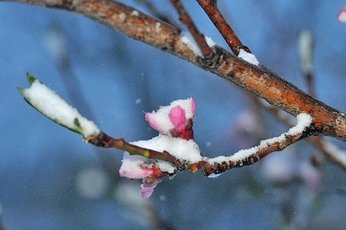
Apricots are more likely to have frost kill flowers than peaches because they bloom a bit earlier. Though there are late-blooming apricot varieties, the differences between full bloom on early and late-blooming varieties appears to be slight. Research at Virginia Tech in the 90's showed a maximum of a 4-day difference between early and late varieties. However, in some years that may be all that is needed. The trees in the study that were considered late blooming included Hungarian Rose, Tilton and Harlayne. Harglow was not included in the study but is also considered late-blooming. See https://pubs.ext.vt.edu/422/422-761/422-761.html for more info.
Peaches are next on the list for being likely to be caught by a late frost. With peaches, two characteristics become important when considering whether they will be damaged. Like apricots, bloom time is very important but fruit bud hardiness should also be considered. In this case, fruit bud hardiness refers to hardiness to late frosts rather than the ability to survive extreme low temperatures during the winter. Late bloomers included ‘China Pearl’, ‘Encore’, ‘Intrepid’, and ‘Risingstar.’ See http://aces.nmsu.edu/pubs/research/horticulture/RR782.pdf. The ‘Intrepid’ cultivar also has shown excellent cold hardiness when in flower. See http://www.google.com/patents/USPP12357
So, are there other considerations when looking at possible frost damage? Location can be very important. Planting on a hill which allows cold air to drain to lower elevations can help. Also, a location in town will be more likely to have a warmer micro-climate than an exposed location. Some gardeners will add a heat source under a tree during cold nights if they are close to a building. Heat lamps and charcoal briquettes are sometimes used but safety should be the first consideration. (Ward Upham)
Pawpaw Trees: A Native Fruit
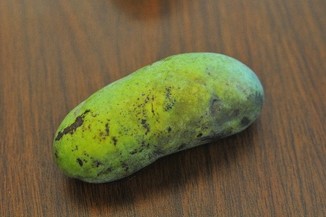
Pawpaw prefers a well-drained, moderately acid (pH 5.5 to 7.0), moist soil and high organic matter content. Organic mulch is also recommended. Irrigation will be helpful to necessary depending on what part of Kansas they are grown.
In the wild, the pawpaw is an understory tree and may do better with partial shade, especially during the first 2 to 3 years. Protection from high winds is also advisable due to the large leaves. The pawpaw is a small tree that may reach 20 feet high but is less broad. Trees require cross-pollination and so at least 2 and preferably 3 different varieties should be grown. These trees are pollinated by insects other than bees such as beetles and flies and must be planted close together. Trees should be no further than 30 feet apart in order to insure good pollination.
The soil for planting should be prepared in advance of receiving the trees. Amend the soil with organic matter in the area where the trees will be planted. Do not amend just the soil from the planting hole especially if the soil is heavy and has high clay content. If you do, you have essentially made a pot that will hold water and may drown the tree. Rather add organic matter to the area in which the tree will be planted before digging the planting hole; at least a 10- by 10-foot square. You may want to treat the entire area where your trees will be planted. Add 2 inches of organic matter to the surface of the soil and then till in.
The planting hole should be the same depth as the root system but 2 to 3 times as wide. Pawpaws have fleshy roots and are better planted in the spring (April) rather than fall unless container grown. Container-grown plants can be planted virtually anytime.
Keep newly planted trees well watered. The soil should be moist but not waterlogged. Keep the planting area completely free of weeds or any other type of vegetation within 3 feet of the trees. Mulching is recommended.
There has been a significant amount of work done on pawpaw by Kentucky State University. You can reach their pawpaw site at http://www.pawpaw.kysu.edu/. Information on growing pawpaws is available from Peterson Pawpaws at http://www.petersonpawpaws.com. Neil Peterson’s pawpaws are the result of over 25 years of research and have been widely tested. Though Neil no longer sells his varieties directly, he does list a number of nurseries that carry them.
The Kansas Forest Service (www.kansasforests.org) has seedling trees available for sale though I would recommend getting named varieties instead if you wish to plant only a few trees. The fruit from named varieties will be of a higher quality than that from a seedling tree. Named variety pawpaws are available from Stark Brothers (www.starkbros.com) and one from Raintree Nursery (www.raintreenursery.com).
The University of Missouri has a couple of different pawpaw cultivar trials. You can find results from one of these trials at http://www.centerforagroforestry.org/pubs/pawpaws.pdf (Ward Upham)
Miscellaneous:
Bird Feeding
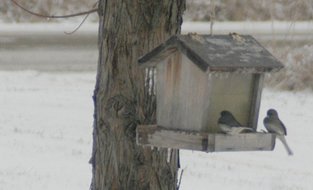
As you become more interested in bird feeding, you may want to use more than one feeder to attract specific species of birds. Following is a list of bird species with the grains they prefer.
- Cardinal, evening grosbeak and most finch species – sunflower seeds, all types.
- Rufous-sided towhee – white proso millet.
- Dark-eyed junco – white and red proso millet, canary seed, fine cracked corn.
- Many sparrow species – white and red proso millet.
- Bluejay – peanut kernels and sunflower seeds of all types.
- Chickadee and tufted titmouse – peanut kernels, oil (black) and black-striped sunflower seeds.
- Red-breasted nuthatch – oil (black) and black-striped sunflower seeds.
- Brown thrasher – hulled and black-striped sunflower seeds.
- Red-winged blackbird – white and red proso millet plus German (golden) millet
- Mourning dove – oil (black) sunflower seeds, white and red proso plus German (golden) millet.
Extended cold periods can also make water unavailable. A heated birdbath can be a tremendous draw for birds during times when all other water is frozen. Energy use is usually less than what most people expect IF the heater has a built-in thermostat. If you would like more information, Chuck Otte, Agriculture Extension Agent for Geary County has a series of backyard birding guides at http://gearycountyextension.com/NRMW.htm (Ward Upham)
Contributors: Ward Upham, Extension Associate
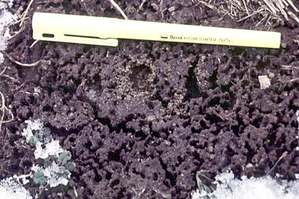
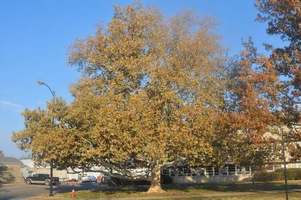
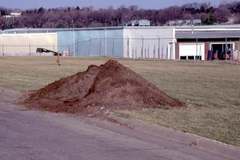
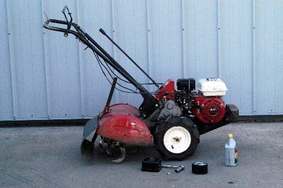
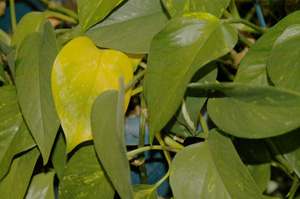
 RSS Feed
RSS Feed
